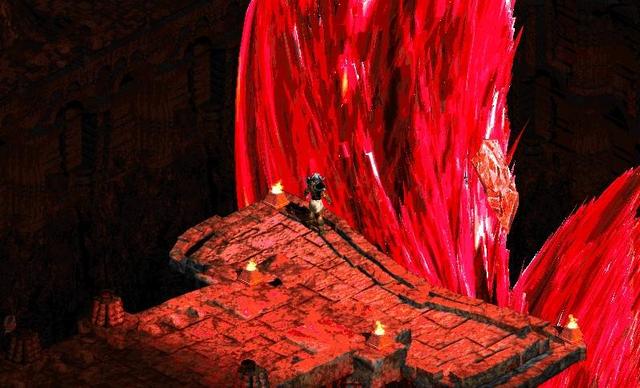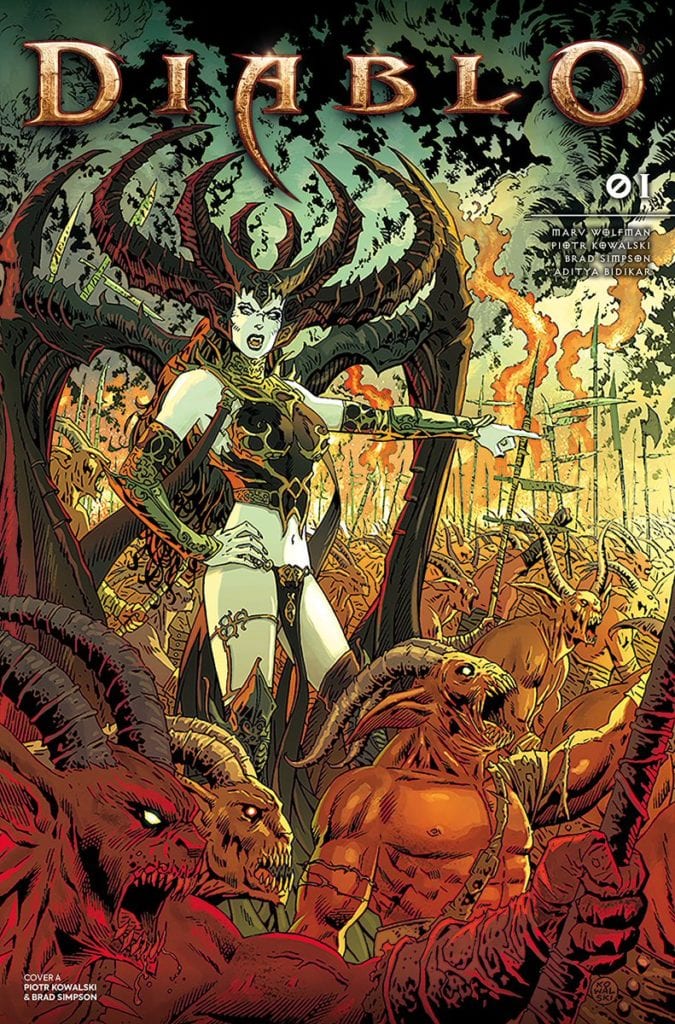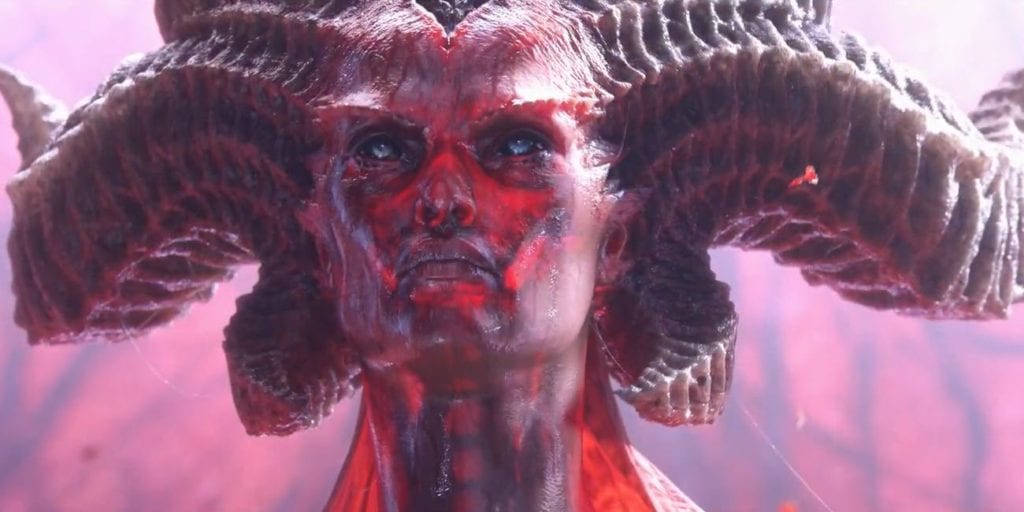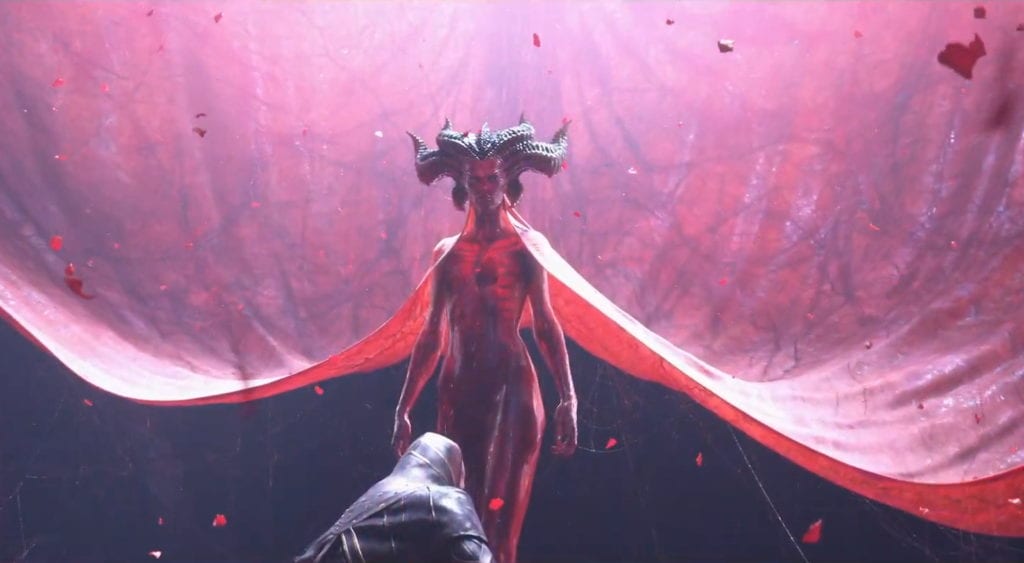If you watched the Diablo IV announcement trailer at BlizzCon 2019, you might be wondering who the demonic being who descended from a bloody portal made of her own skin is. She alighted on the ground of the summoning chamber, her fleshy portal transformed into a cape. Her tissue is blood red and translucent like a fetus. You can even see her beating heart. How suitably macabre for the Diablo series. So, who is she?
Her name is Lilith.
The Daughter of Hatred
Lilith, the daughter of Mephisto from Diablo II, is also the queen of the succubi. According to Diablo lore, she fell in love with the archangel Inarius. The two are sort of sworn enemies, so it ruffled some feathers in both Heaven and Hell. To escape persecution, Inarius and Lilith stole the Worldstone and used it to create the world of Sanctuary: the world of Diablo where our player characters have been destroying demons since the original game released in 1996.
Eventually, the two had offspring: the nephalem. This made the forces of good and evil even angrier. The nephalem had the potential to be the most powerful beings in creation. How much more powerful? All humans in Sanctuary are descendants of the nephalem, and nephalem (the player characters) defeated the prime evils in three subsequent games. Heaven and Hell both had reason to be afraid of the nephalem, and the tantalizing appeal of such power soon corrupted Lilith.
Fallen from grace
Eventually, Lilith gave up any pretense of living peacefully and betrayed her lover. She slew his followers, but given her feelings for him, she spared his life. Her demonic nature unable to be contained, she sought to rule over Sanctuary with the nephalem as her own army. Inarius managed to defeat her, however, and he banished her from Sanctuary. He then crippled the power of the nephalem to ensure that the balance of good and evil would not be threatened. But as we saw in Diablo I, II, and III, the nephalem are still a force capable of defeating angels or demons.
Supposedly, a series of comics books on her origin were scheduled to release last year. But they were canceled because Blizzard wanted to change the direction of the story. The artwork and design for Lilith also appear different in the comic. However, the comic would have taken place far in the past, before Lilith’s various defeats and incarnations on Sanctuary. It is possible Blizzard decided it didn’t want any outside writers exploring the upcoming villain, so today’s reveal might finally explain why the comic was canceled after all. The timing certainly fits.
Afterward, Lilith makes a few appearances in the lore. You actually fight her in Diablo II, but she didn’t seem too special at the time. She was simply a darker Andariel model that players encountered. I barely even remember whirlwinding through her with my Barb back in the early aughts. She didn’t seem too tough then, but she has also had a lot of time to stew in her demonic rage. And she misses her children.
Mother is home
In the CGI trailer, it appears as if they have downplayed Lilith’s succubus origins. We already had a minor boss, the Maiden of Lust, in Diablo III, who raunchily taunted the players as they made their way into Hell. It looks like we won’t be getting that here, thank goodness. Succubi are interesting and all, but do you want a sleazy demon as your primary antagonist in a game? The Lilith we saw in the announcement trailer was regal and foreboding. Her gaze was ice-cold, lacking any of the passion one might associate with a succubus. She truly appeared matriarchal.
So why did Blizzard seemingly choose to make Lilith the new big bad of Diablo IV? For a start, she is not completely evil, or at least not as evil as other demons. She has shown in the past that she had the capacity to love and to care for others. Our knowledge of her prior motivations shows that her decisions — although bloodthirsty — might have been made in the name of the greater good. According to Blizzard’s published lore book, The Book of Cain, Lilith was trying to end the Eternal Conflict between Heaven and Hell once and for all. Was she trying to save creation? Or was she simply driven mad by power?
A complex villain makes a good villain, and if written right, her motivations might differ from that of the three prime evils. Diablo IV could have a more engaging narrative compared to its straightforward predecessors, while still maintaining the dark, Gothic feel of the series.
If you want to know more about the lore of Lilith, Inarius, and the origin of Sanctuary, check out the Sin Wars Trilogy of books by Richard A. Knaak.











Published: Nov 1, 2019 05:00 pm